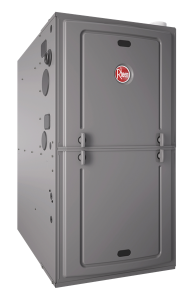Blog
How a Gas Furnace Works
All furnaces convert some type of fuel to heat, and gas furnaces convert gas to heat. Understanding the basics components of your gas furnace and how they all work together can help you spot problems in furnace operation or even perform basic maintenance tasks yourself. In turn, this keeps your gas furnace working at its most efficient.
Components of the Furnace
A gas furnace has a burner, which heats the fuel. The hot gas then travels through a heat exchanger, which absorbs the hot air created and filters that air to ducts. The hot air then travels through these ducts to heat your home. Meanwhile, the gas created in the process exits your home through a vent pipe. Your furnace also has a safety and a limit switch, which allow you to shut down the unit in the event of a problem. When the furnace is in operation, a fan also circulates air and gas inside the unit.
Because deadly carbon monoxide gas is produced during the gas heating process, it is crucial to keep your home or business gas furnace operating in safe condition. If the heat exchanger develops small cracks, carbon monoxide gas can leak out of the furnace and into your home. A carbon monoxide detector in the home can also serve as a backup by indicating when you have levels of the odorless, colorless gas in your home.
How a Gas Furnace Works
A programmable thermostat works in conjunction with your gas furnace: When home temperatures fall below the number indicated on your thermostat, an igniter in your furnace lights the burner and the unit turns on. The furnace then operates until home temperatures meet or exceed your desired temperature. If the pilot light in your furnace goes out, the unit will not be able to ignite. Most furnaces today have an electronic ignition and no pilot light, which requires attention from a professional if it is not working right. If you still have a pilot light on your furnace, it’s probably time to think about a new one because it is most likely 20+ years old. When all components of your furnace are working properly, you enjoy a heated home, your furnace operates at maximum efficiency so you do not spend more than you need to on home heating, and you remain comfortable.
Problems with your thermostat, your furnace or your home electrical system can cause the furnace to stop working. To keep your furnace running at its best, schedule yearly service appointments with your HVAC technician.






